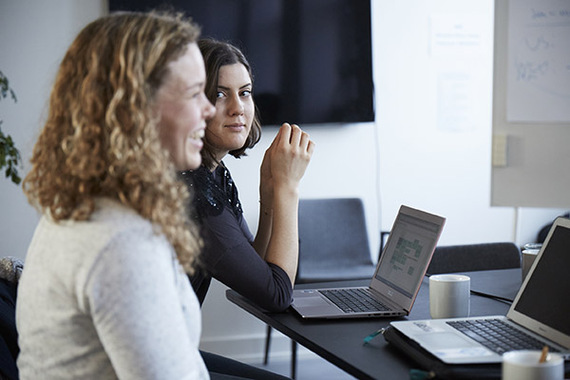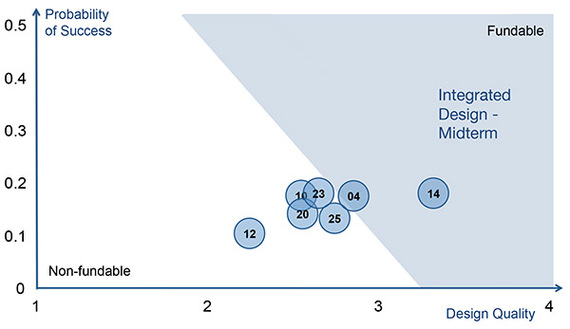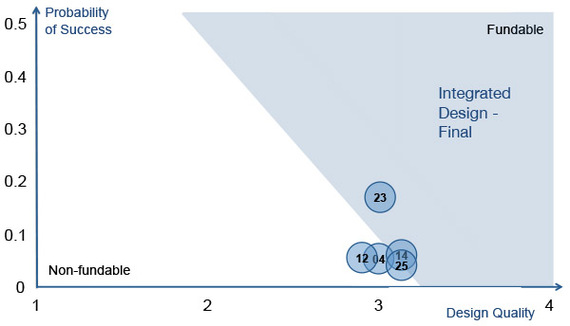Co-written by Johan Vardrup
Co-working spaces that cater to startups have boomed in the past decade. Globally, the number of providers now surpasses ten thousand and London has seen an increase from a handful of locations to over two hundred within a few years. So far, the business area is still rooted in a conventional primary business model - that of renting out space.
Co-working firms provide a desk space or a room on a monthly rental basis, enabling startups to save their working-capital for developing their nascent venture. With all this diverse brainpower under one roof, your ideal business partner may be sitting only an arm's length away, so, the possibilities for developing strong value propositions are vast.
Rainmaking Loft, with offices located in Copenhagen, London and Berlin, is exploring new ground by working together with international master graduate students at Copenhagen Business School and applying the latest thinking in design. Several studies have shown that being design-centric increases performance, however does it make one more innovative?
When business people talk about design and innovation these days, the Design Thinking approach from Stanford d. school and the international design consultancy IDEO inevitably comes up. Focusing on user needs up-front, Design Thinking is excellent at fostering incremental innovations, however it falls short when it comes to supporting breakthrough innovation.
To remedy this known shortcoming of Design Thinking, seven teams of three students began exploring the possibilities of the still evolving Inspirational Design Thinking method in the co-working business. Conceived in late 2015, the process is intended to augment conventional Design Thinking so as to generate breakthrough innovative concepts.
Inspirational Design Thinking focuses exclusively on addressing opportunities from a Why - How - What perspective, as opposed to the traditional What - How - Why angle. Simon Sinek says, "People don't buy what you do; they buy why you do it. What you do simply proves what you believe."
The teams started out by asking the Big Questions and addressing The Meaning of Life. They created business ideas, business strategies and business models, which then informed an actionable Inspirational Design Brief. Linking business ideas to an Inspirational Design Brief that contains the nine most critical Design Quality Criteria enabled the teams to formulate concepts with a higher probability of viable new ventures.
At the midterm presentation, the teams had generated concepts ranging from "Warrior Rooms" reserved for shared projects among in-house startups, collaborative areas for business travelers in airports and on trains, Pop-up Lofts at universities and co-working facilities made out of recycled shipping containers. The concepts were based on technologies ranging from web platforms/apps to networking and architecture.
So, how promising were these concepts? Applying the Design & Risk Assessment tool, the teams could look reality straight in the eye. Developed together with the INDEX: Award, the tool outlines a new entrepreneurial venture's funding viability based on reported performance on the nine Design Quality Criteria, as well as, Market risk, Technology Risk and Execution risk.
One of the seven teams was found to be fundable, one barely fundable and the remaining five, non-fundable. The decision the teams then faced was: Can we iterate our way to fundability or is a pivot required?
With only two weeks to go between the midterm and the final presentation, the teams hunkered down and went through Redesign / Partly Redesign, Detailing and Refinement phases, making three presentations to their peers as part of the process. Keeping up the pace and not designing in a vacuum improved the overall design and innovation; however, it also increased the risk of their ventures.
The concepts that Rainmaking Loft found useful included the "Warrior Rooms", which would be easy and inexpensive to implement, and Pop-up Lofts at universities that could strengthen the link to higher education. The first is an incremental innovation and low hanging fruit, while the second opens space for new collaborative models with universities and thus is more breakthrough in nature. It seems time to integrate the academic institutions deeper into the entrepreneurial ecosystem and not only use them as a source for interns.
Which concept to pursue ultimately is a balance between strategic potential, as well as, short and long term viability. The catch-22 being that if one does not take on the breakthrough innovative opportunities, one of thousands of competitors might, leaving one adrift in the vast Red Ocean.
Special thanks to Johan Vardrup for researching and co-writing this article


